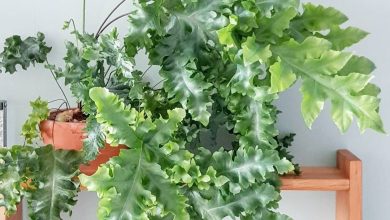Complete Guide on How to Plant Vanilla: [Steps + Images]
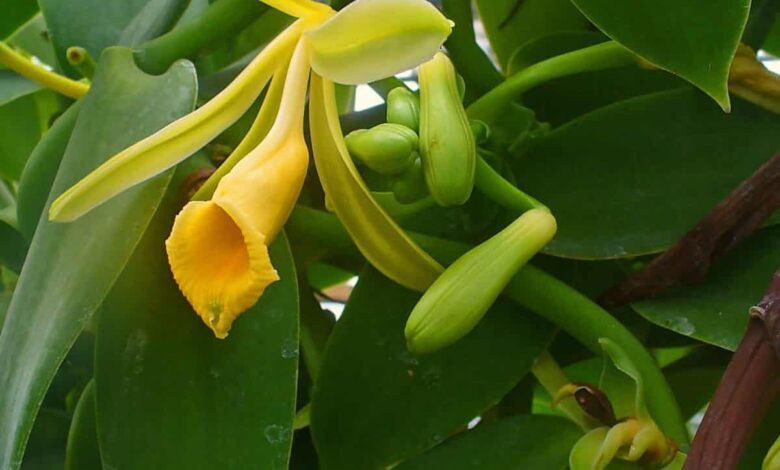
Do you know what my favorite ice cream is? I guess you guessed it: the vanilla one.
Not only that, I love any dessert flavored ( aromatic plants ) with vanilla .
Vanilla is a variety of orchid , native to North America, specifically Mexico. Due to its high consumption, it is one of the most coveted crops on the international market.
There is nothing better than planting your own vanilla in the garden and being able to use it later to make ice cream , desserts, infusions or whatever you want.
The best? It is very simple!
You dare?
- When? during spring , preferably from April to June.
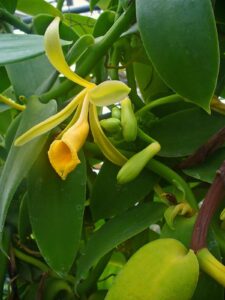
- Where? In an area with a tropical and warm climate. Temperatures between 20-30ª. Exposure relative to sunlight.
- Harvest time? 8-9 months after pollination.
- How do we prepare the land? It prefers loose soils, with excellent drainage and rich in humus. So we want to move the tiller and fertilize the land.
- How do we water? Ideal drip irrigation. It does not support waterlogging at all. It withstands drought better. In summer water 2-3 times a week. In winter it is not necessary.
- How do we sow? Here step by step.
- Plagues and diseases? Red bug, Anthracnose, Fusarium Oxysporum and hairy worm.
What do we need to grow vanilla?
When should it be sown?
The most recommended period is during spring, preferably from April to June.
If sown by cuttings , these can be planted practically all year round.
However, if they are planted during the colder times of the year , vegetative development is usually slower. Likewise, if the planting is carried out during the summer , in the rainy seasons, excess humidity can cause fungi and other diseases .
Where?
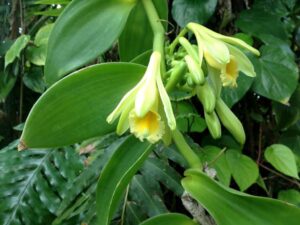 Vanilla thrives on a Climate Tropical hot and humid.
Vanilla thrives on a Climate Tropical hot and humid.
Optimal temperatures are between 20 and 30 ° C , without much variation between day and night.
During fruit ripening , a slight decrease in ambient temperature may be beneficial .
Strong lighting reduces growth, so 50% sun exposure and another 50% shade are recommended . In more arid regions or with very intense suns, an exposure to the shade of between 50 and 70% is recommended.
They prefer direct light in the morning , as the afternoon sunlight is more intense and can burn the plant.
How often should it be watered?
Vanilla is more tolerant of lack of water than puddling. Over-watering it can kill it.
Remember that the roots of vanilla are of superficial growth; therefore, it is better to water several times with little water , than to water a lot of water only once.
In the dry season , it is watered one to two times a week , while in the rainy season it is not necessary to water.
Rainfall must be abundant and well distributed, although a decrease in these is convenient at the beginning of flowering and fruit maturity. This decrease should not lead to drought, as this is usually fatal for the plant.
Relative humidity should be less than 80%.
How do we prepare the land?
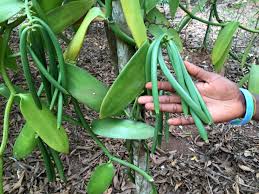 Vanilla prefers loose soils , with excellent drainage and rich in humus .
Vanilla prefers loose soils , with excellent drainage and rich in humus .
Vanilla usually grows in soils with high calcium and potassium content .
The pH must be between 6.0 and 7.0.
What are the most favorable associations for growing vanilla?
Preferably, you should avoid planting vanilla in fields where they have already been planted before , since there is surely an inoculum of the Fusarium oxysporum fungus and it is very risky to establish vanilla.
How to sow vanilla step by step
Clear the ground
Remove weeds and old crop debris and all kinds of residues to ensure that your vanilla plant can develop properly.
Moisten the soil a week before sowing
This way you reduce the risk of expelling the seeds by the force of the water.
Fertilize the soil
 Spread some organic matter on the soil to improve the overall quality before you start sowing the seeds .
Spread some organic matter on the soil to improve the overall quality before you start sowing the seeds .
Orchids require a high content of potassium and calcium, since these are nutrients that they cannot take from the substrate where they are grown and they require us to provide them.
You can fertilize with crushed egg shells, cooking water for potatoes or rice , and oak leaf tea.
Get vanilla cuttings
 Vanilla is best grown from cuttings . These must be 80 to 120 cm in length and one cm in diameter.
Vanilla is best grown from cuttings . These must be 80 to 120 cm in length and one cm in diameter.
Make sure your vanilla cuttings don’t have the last three basal leaves. Otherwise, you will need to remove them. This is twisted and breaking the petiole of the same, but without pulling, to avoid injuries to the stem, since they can be an entry point for pathogens.
To prevent rotting of the cuttings , caused mainly by Fusarium oxysporum, it is recommended to disinfect them before planting them in the final site, immersing them in a container with Bordeaux mixture for 5 minutes.
Then, place the cuttings in a shady and well-ventilated place for a couple of weeks so that they dehydrate a bit and heal any injuries that could have been caused when obtaining the cutting.
Put the cuttings in the ground
You can plant vanilla in the garden directly or in a pot, if you prefer.
Bury them to a depth of between 5 and 10 cm , according to the size of the cutting.
Cover the base with a 3 to 5 cm layer of compost or litter. If you prefer, you can use a stake to facilitate the vertical growth of the plant.
The first roots should appear during the first week and the first vegetative shoots around 30 days after planting.
Water frequently
Make sure the soil is always moist , but not puddling. Water is the factor that most influences the growth of the vanilla plant.
Fertilize the land
The residues of decomposed plant and animal materials are the best source of nutrients for the vanilla plant.
Also, compost can be used during the spring , since it decomposes more quickly and is less affected by the rains.
Picking the vanilla
The vanilla it is harvested during the fall , when the apex or tip of the fruit changes from a green to yellow color; this generally occurs eight to nine months after pollination.
They are placed in piles , under shelters protected from the rain and thus undergo a partial fermentation. After that they are exposed to the sun until they acquire a brownish-brown color.
The total duration of the post – harvest process is around six months.
Vanilla pests and diseases
Some of the most common pests and diseases that affect vanilla are:
Red bug
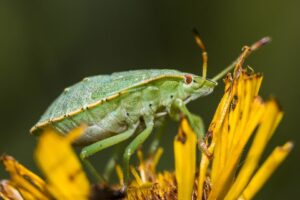 The red bug is controlled , when there are low populations , by removing individuals manually and squashing them . This should be done, preferably, during the morning, which is when the bed bugs are quiet.
The red bug is controlled , when there are low populations , by removing individuals manually and squashing them . This should be done, preferably, during the morning, which is when the bed bugs are quiet.
For the control of denser populations , you can apply a mixture of 3 onions and 3 garlic heads, ground and mixed with a bar of neutral soap . All this, diluted in 40 liters of water . The mixture must rest for 48 hours before use. It is applied by sprinkling on the leaves.
Neem oil , which is highly effective, can also be used .
Hairy Worm
For its control, the same mixture that we use to control the red bug can be used.
Fusarium Oxysporum
To prevent the disease, it is recommended to use well-drained land , plant healthy and vigorous cuttings , protect the roots, avoid over-pollination and regulate the shade.
It can also be prevented by applying Bordeaux mixture once or twice a month, but in the absence of intense sun exposure to avoid burning problems.
Anthracnose
To prevent it, it is recommended to install a drip irrigation system and apply horsetail. As well as promoting good ventilation of the plants.

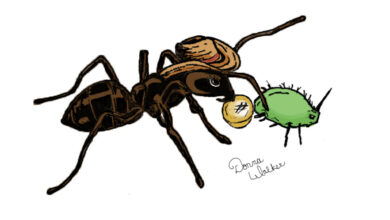
![Photo of Planting Celery: Cultivation, Harvest, Irrigation [16 Steps + Images]](https://www.complete-gardening.com/wp-content/uploads/2022/08/planting-celery-cultivation-harvest-irrigation-16-steps-images-390x220.jpg)
![Photo of Planting Rice in [11 Steps and with Photos]: The Guide You Need](https://www.complete-gardening.com/wp-content/uploads/2022/08/planting-rice-in-11-steps-and-with-photos-the-guide-you-need-390x220.jpg)
